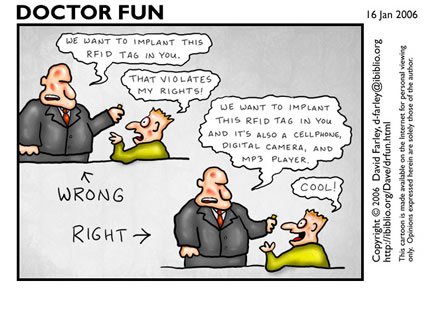 |
This project explores algorithm, architectural and circuit ideas for implementation of Security Functions on RFID tags. An RFID tag harvests its power from the RF field that a reader sets-up while reading the tag. Typical power consumption, gate count and cost are below 10uW, 50K and 10 cents respectively. We explore energy efficient sub-threshold logic and memory design that can operate at sub-10uW power levels, while also delivering performance required for computationally intensive encryption algorithms. |
 |
RFIDs have found widespread use in Inventory management, with Walmart being the most noted user (tag above), having mandated all its suppliers to tag products with these miniature tracking systems. Other uses include electronic parking ticket, toll access cards, transportation (bus and trains) tickets, and even passports! However, the use of RFID technology has engendered considerable controversy and even product boycotts by consumer privacy advocates. |
The two main privacy concerns regarding RFID are: (a) Since the owner of an item will not necessarily be aware of the presence of an RFID tag and the tag can be read at a distance without the knowledge of the individual, it becomes possible to gather sensitive data about an individual without consent. (b) By remembering the response of a tag upon interrogation, its possible to track a person carrying an item with a tag.
Faculty: Dave Evans (PI), Ben Calhoun, John Lach, Abhi Shelat Students: Sudhanshu Khanna, Jarvis Huang, Yu Yao
